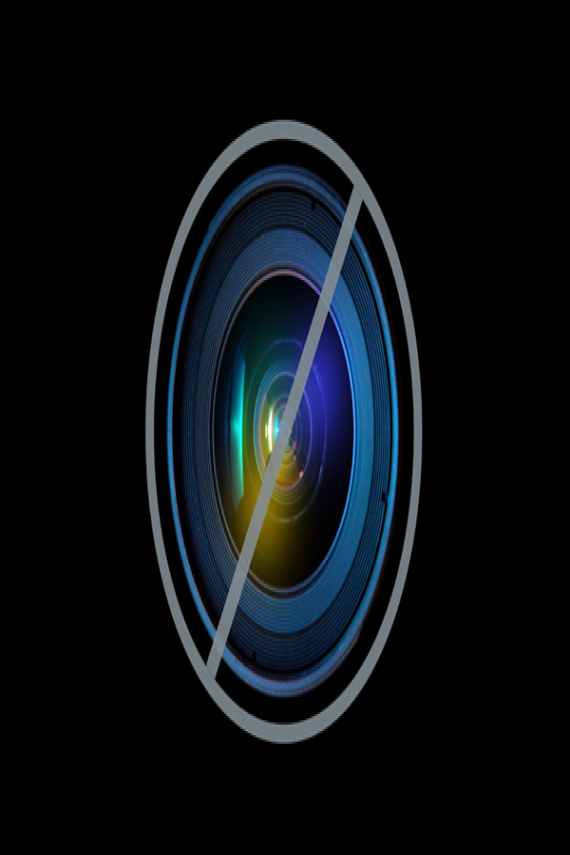Picture this: a new device that hangs glass in front of people's faces to help them see the world differently. It's a technology so unusual, people consider it awkward, unsightly and ridiculous, and a product so expensive, it's available only to the upper crust.
Sounds like Google Glass, doesn't it? Yet that could just as easily describe the world's early view of eyeglasses.
Glass, like spectacles long before it, has caught flak for looking strange. At the annual South by Southwest festival in Austin, Texas, this past weekend, the Glass-wearing Googlers in attendance provided many people their first in-person glimpse of the new gadget, sparking a fresh wave of criticism over the product's appearance.
Business Insider declared the design "dorky," while Twitter user @3dg4r wrote his first view of Glass confirmed, "it's exactly as stupid looking as I expected it to be." The reactions shored up prediction from a Huffington Post commenter last moth: "It will become socially unacceptable to wear these in public."
 Google co-founder Sergey Brin with Google Glass.
Google co-founder Sergey Brin with Google Glass.
While pundits argue that Google's biggest challenge with Glass will be convincing people to wear the things on their faces, the history of glasses -- another form of wearable technology that succeeded in spite of early criticism -- could offer some lessons, and some hope. Yet the success of the device will ultimately depend on whether Glass offers the same indispensable improvement to our lives that glasses have provided. Function will determine whether we accept Glass's form, not the other way around.
Although spectacles quickly demonstrated their merits to early adopters in the Middle Ages, it nonetheless took several hundred years for glasses to shed their social stigma.
"It's only in the last couple of centuries that they have come to be seen as mainstream, and it was only just before the second Word War that people were thinking of them as something that adorned the face rather than disfigured it," said Neil Handley, a curator at London's College of Optometrists and author of Cult Eyewear: The World's Enduring Classics.
Glass could follow a similar evolution, he noted, though he added, "I imagine Google doesn't have the time to wait that long for this technology to succeed."
First worn in the late 13th century by friars in Italian monasteries, by the 14th century spectacles had started their steady proliferation throughout Europe, though many considered the eyewear to be the antithesis of elegance and style.
"References to [spectacles], in documents as well as pictures, became more and more numerous; but the masses did not take kindly to the innovation," wrote Carl Barck in his 1903 lecture, "The History of Spectacles." "Wearers of the spectacles were not only ridiculed, but the glasses, according to the superstition of the times, were called a device of the devil."
Artists coopted glasses as symbols of deceit and malice, and they became a de facto accessory for devils and demons depicted in paintings. "In the 16th or 17th centuries, if you had a painting of someone wearing glasses, it was artist making a criticism of the person in the picture, either to suggest that they were mean, or morally suspect, or guilty of various other vices," said Handley.
Around this time, according to Handley, spectacle-makers in Europe mobilized a campaign to rehabilitate glasses-wearing, and embraced a classic public-relations technique that could work just as well for Glass: the celebrity endorsement.
The merchants selected Saint Jerome, the translator of the Bible, as the spokesman for spectacles. Though he'd died several hundred years before glasses were even invented, the long hours he presumably spent straining his eyes over pages of text made him, in the estimation of the glasses-makers, an appropriate figurehead for spectacles. There followed a slew of paintings showing Saint Jerome in glasses, as well pictures of the baby Jesus or Saint Joseph clutching their own eyewear.
"It's a total anachronism, but it was seen as means of making glasses-wearing respectable," said Handley.
While Google isn't likely to pick a saint to endorse Glass, Hollywood stars have proven equally effective at driving demand for glasses in more recent years. The success of the Harry Potter franchise sparked feverish demand for the very glasses that gathered dust in opticians' drawers for years, and even children who don't need glasses have sought out spectacles to match the fictional wizard's, explained Handley.
Google has already shared Glass with high-profile individuals, such as fashion designer Diane von Furstenberg, though the company also has opted for a more democratic approach to pushing its new creation. In February, Google launched the second phase of its Glass Explorer Program in a bid to recruit "bold, creative" individuals to gain early access to Glass, a move that suggests an effort to show just how normal the device is by seeding it among a diverse group of people. (Once individuals are selected as Explorers, they'll still be required to spend $1,200 to purchase Glass.)
Though Google's glasses are anything but orthodox, the emphasis thus far on the "freakish," "nerdy" appearance of Glass seems something of a distraction. Knowing little about Glass, people have focused on what they do know: It looks strange.
A savvy public-relations campaign alone didn't ensure glasses would gain mainstream approval, nor can it secure Glass's fate. Its future will be determined by what we see when we look through it, and less by what we see when we look in the mirror. Google will change how we see Glass if Glass changes how we see -- but only if it's for the better.
